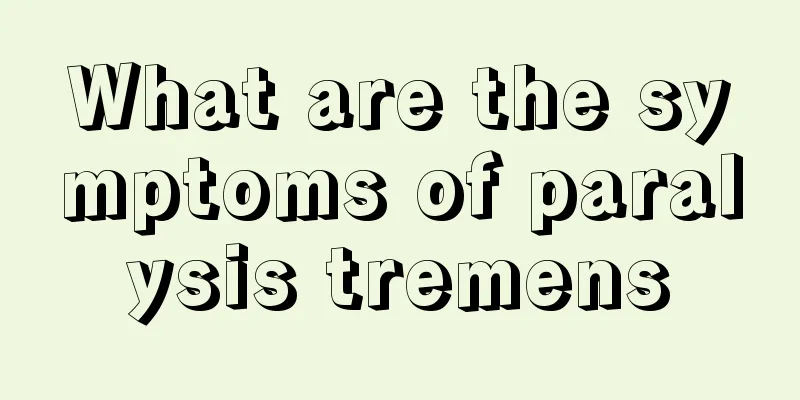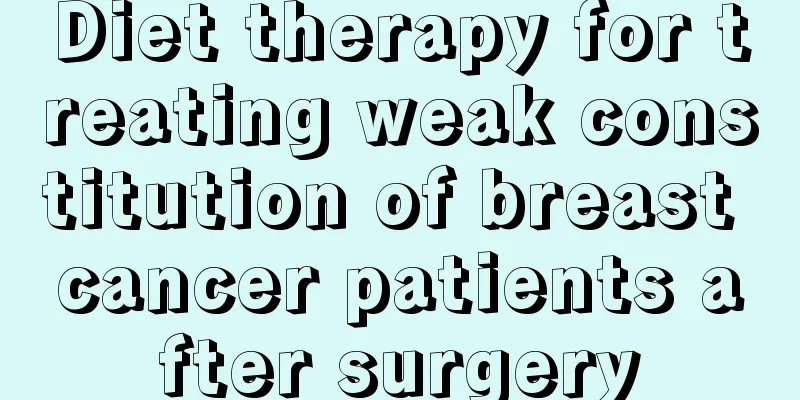What are the symptoms of paralysis tremens

|
Tremor paralysis often occurs after middle age, and its main manifestations are tremors, muscle rigidity and bradykinesia. Sometimes people are unable to complete actions such as dressing, combing hair and brushing teeth. In severe cases, it may manifest as symptoms of dementia. 1. Tremor: Tremor usually starts from one upper limb and hand, presenting a rhythmic pill-rolling movement. As the disease progresses, the tremor gradually spreads to the ipsilateral lower limbs and the contralateral upper and lower limbs, usually more severe in the limbs than in the lower limbs. Tremors of the jaw, lips, tongue and head often appear in the later stages of the disease. Tremors mostly occur when the patient is at rest, are relieved during voluntary activities, are aggravated by emotional tension, and disappear after falling asleep. 2. Myotonia: Muscle tension increases throughout the body. Due to the increased tension of the flexor and extensor muscles of the limbs, the passive extension and flexion of the joints presents a uniform impedance, which is called lead pipe stiffness. If accompanied by tremor, the impedance has an intermittent pause, which is called gear stiffness. Increased facial muscle tension makes the face look stiff and mask-like. 3. Slow movements: manifested by difficulty initiating voluntary movements, slow movements and reduced activity. The patient appears clumsy and slow in turning over, standing up, walking, and turning. Actions such as dressing, combing hair, and brushing teeth are difficult to complete. When writing, the handwriting trembles or becomes smaller and smaller, which is called micrographia sign. Walking slowly with small steps, the feet can hardly leave the ground, and the center of balance is lost when walking. The person often walks faster and faster like a forward rush, and cannot stop immediately. This is called a panic gait. Due to postural reflex disorders when walking, there is a lack of coordinated movement of the upper limbs. 4. Other symptoms: Autonomic dysfunction: Patients have excessive secretion of sweat, saliva and sebum, and often have stubborn constipation. Medical teaching. The Education Network has collected and sorted out mental symptoms and intellectual disabilities: emotional instability and depression are the most common. About 15% to 30% of patients have intellectual disabilities, with memory loss, especially recent memory loss, being the most obvious. In severe cases, it may manifest as dementia. |
<<: How to treat neurasthenia headache, 4 methods are the most important
>>: Traditional Chinese Medicine Methods for Treating Vocal Cord Paralysis
Recommend
What harm does edible flavoring have on babies
Many of the foods we buy usually contain some edi...
What are the three major factors that are most likely to cause lung cancer?
At present, the vast majority of causes of lung c...
What kind of contraceptive method is the best?
What kind of contraceptive method is the best? Th...
Can teratoma be treated with medicine?
Many teratoma patients are very nervous after bei...
Chaos operation method
Many people do not know much about the chaos oper...
How to cure liver cancer and live longer? The most effective way to treat liver cancer
Liver cancer is a relatively serious disease. Amo...
What are the late symptoms of nasopharyngeal carcinoma and how to treat it
What are the late symptoms of nasopharyngeal carc...
How to wash spade juice
In our daily life, we mostly use soap, washing po...
What are the specific manifestations of the symptoms of advanced liver cancer? Typical symptoms of advanced liver cancer
The late stage of liver cancer is generally diffi...
Can you still drink expired pure milk?
I believe that no matter what you buy, you will c...
Urine specific gravity is high
Urine is the excess water excreted by the human b...
What to do if your hair is messy
Many girls pay special attention to their hair ca...
Conservative treatment of cervical fracture
The treatment method for cervical fractures is cl...
What foods are better for preventing liver cancer? 9 kinds of foods to eat more to prevent liver cancer
Everyone knows that the incidence of liver cancer...
What should you pay attention to in your diet for brain cancer
Brain tumors, also known as intracranial tumors a...









